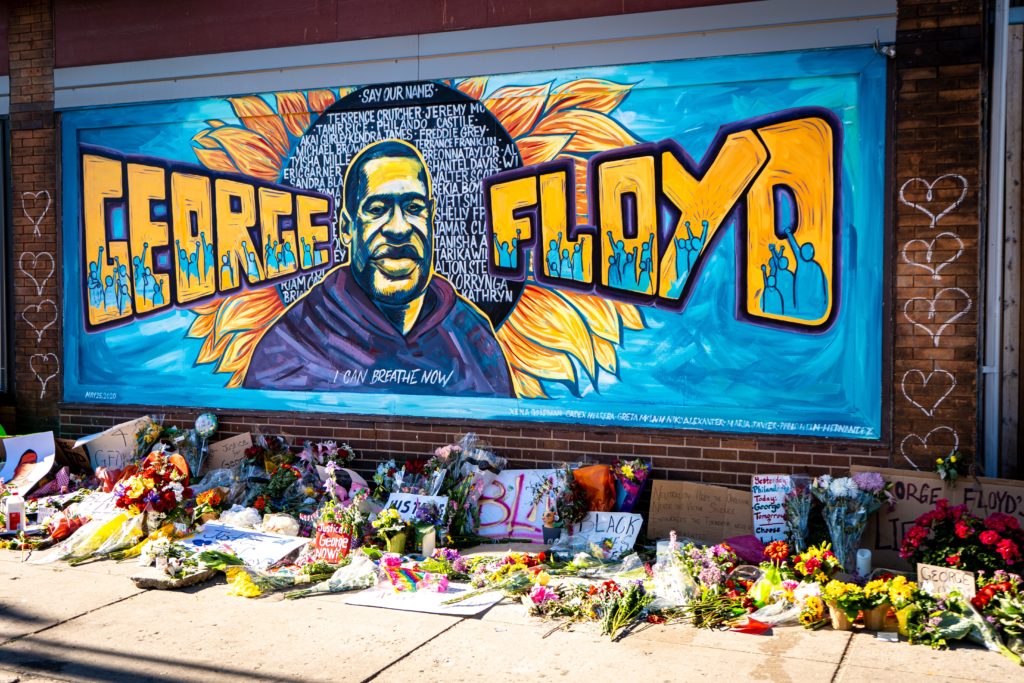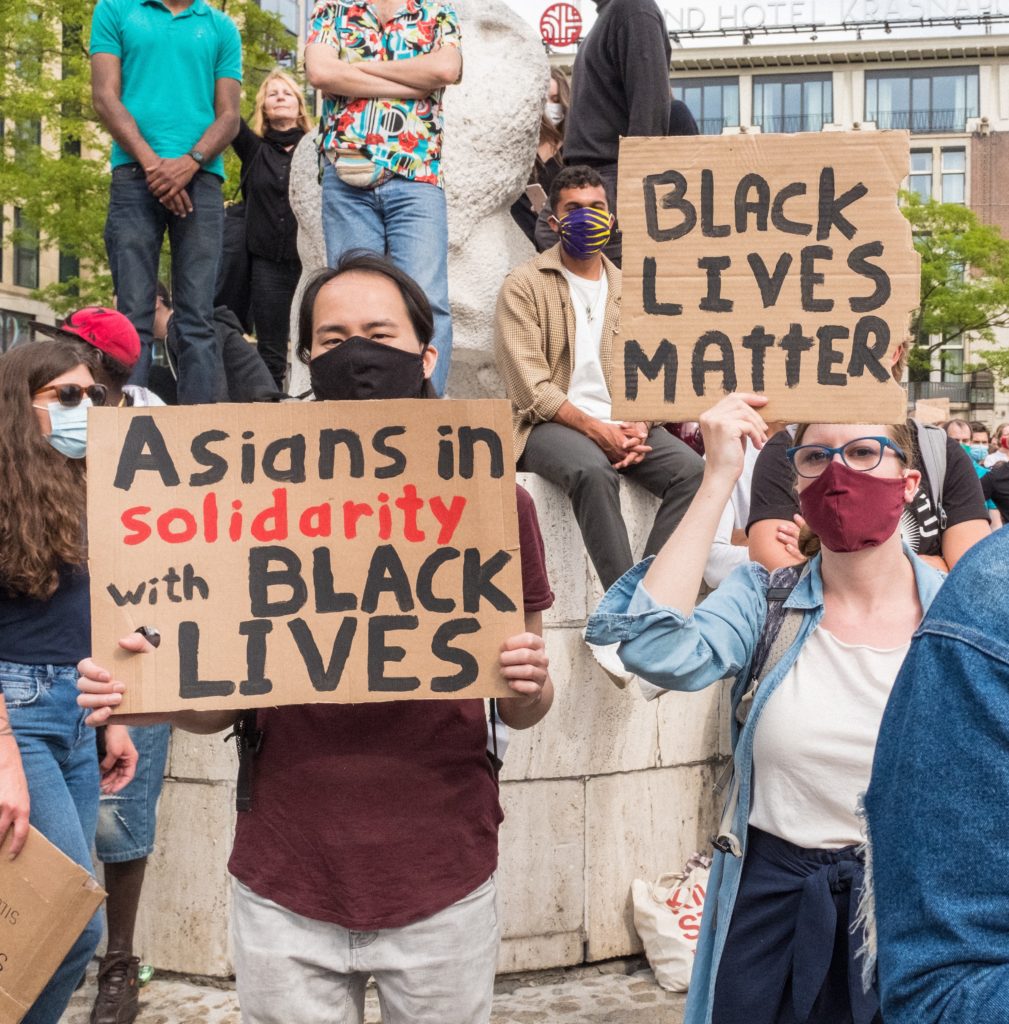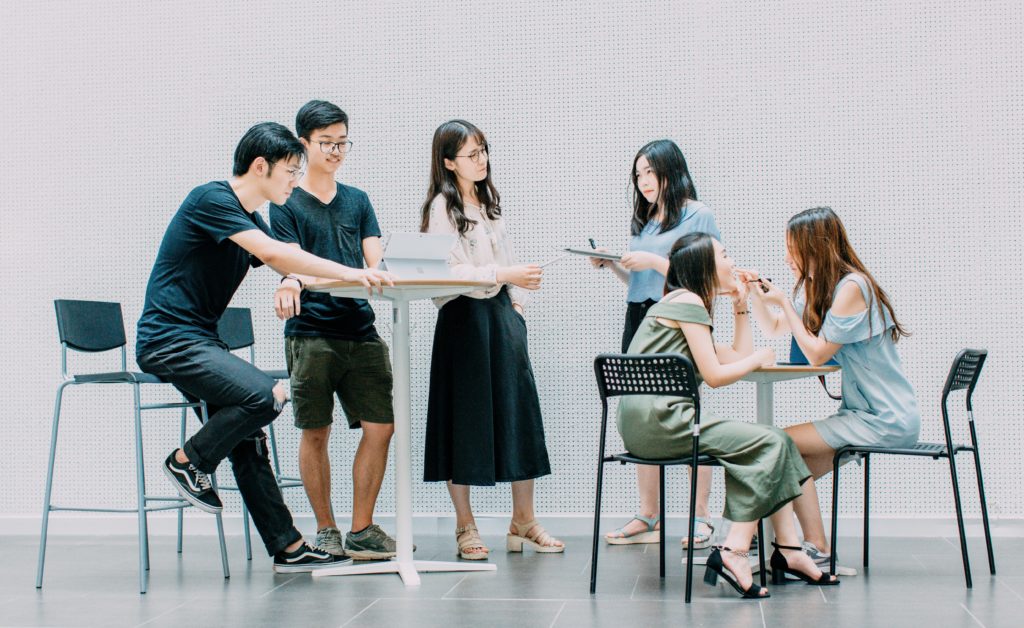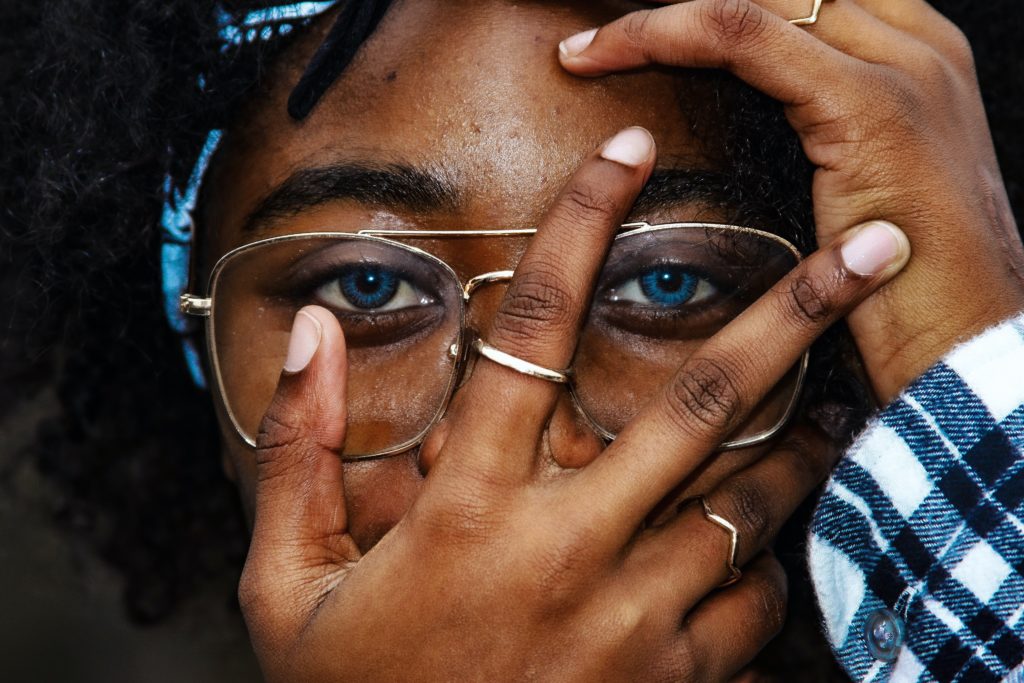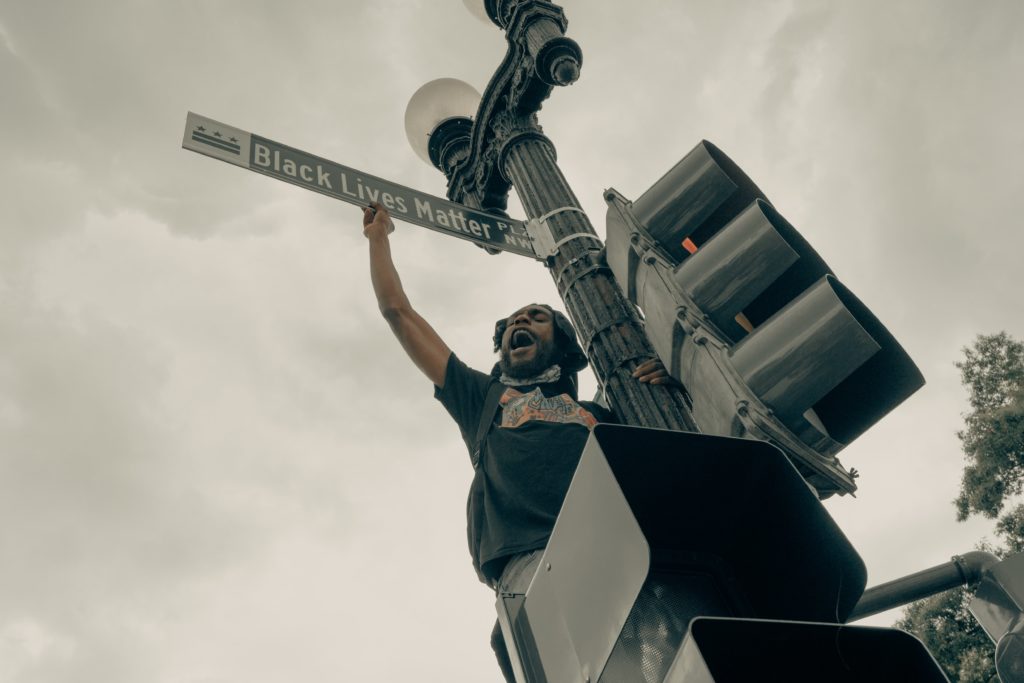[15 minute read]
Editor’s Note:
Unprecedented times call for unique actions. Oftentimes it is easy to forget that history is not a thing of the past, but rather something that is being created every day. A large and powerful university such as USC has a significant influence on its community, and that community spans from on campus inhabitants to the Los Angeles population to the United States as a whole. Students and faculty have a choice, as part of a major institution, to make their voice be heard through the variety of platforms, privileges, and opportunities through which USC has afforded us with.
When we observe discrimination, particularly in a time where information is so easily accessible, it is imperative that we educate ourselves and raise awareness for others. The voices of the Black Lives Matter movement and families across the country who have experienced losses similar to those of George Floyd’s family need to be heard. The death of George Floyd, as well as the economic consequences of COVID-19 occurring at the same time, have made it clear that certain members of our community, especially minorities and low-income families, are not being granted the rights that our country is founded on. As a part of the USC community, the USC American Language Institute recognizes these problems and leaders in some of our programs have stepped forward and written their own thoughts and reflections on the matter at hand.
The American Language Institute bridges an important gap on USC’s campus: the gap between domestic and international students. As students in the United States, it is important that all members of the USC community remain open and informed about the history that still plagues America to this very day. Three students have written about this movement, not only in the context of America and USC, but in the context of other minorities (particularly Asian Americans) who also play a significant role in shaping America’s history. We have united these voices, and below you will find three articles: Yellow Peril: What Black Lives Matter Means To Us by Tina Wang, Black Lives Matter: What Is It? by Kaitlin Foo, and Privilege in the Light of COVID-19 by Sarah Ta. Through these voices we hope you find inspiration and knowledge to help shape your own role in the history that is being made around us at every moment. The USC American Language Institute embraces our international community with open arms as well as the community at large, and we hope you will find some of your questions answered through these articles.
-Natalie Grace Sipula, Editor
YELLOW PERIL: WHAT BLACK LIVES MATTER MEANS TO US
By Tina WangAs I am sitting here on a Wednesday morning writing this article, I am filled with disappointment and sadness for what has been occurring in this country. For those who are not aware, protests and riots have consumed the nation in the past week over the recent death of an African American man, George Floyd. On May 25, George Floyd was detained by four police officers in Minneapolis, Minnesota, after a local store owner reported suspicions that Floyd was attempting to purchase a pack of cigarettes with a counterfeit bill. In the ensuing encounter, Officer Derek Michael Chauvin knelt on George Floyd’s neck for over eight minutes while Floyd proclaimed, “I can’t breathe,” and “Don’t kill me.” After those eight minutes, he suffocated. Recorded on video tape, for 2 minutes and 53 seconds after the victim became unresponsive, Chauvin maintained his knelt position. George Floyd later passed away, and several different autopsies have produced different results, some claiming that his death was due to pre-existing heart conditions, and other independent studies stating that his death was a direct result of homicide by asphyxiation. The video of this encounter quickly surfaced on the internet and spread like wildfire throughout the country, with people nationwide crying “Black Lives Matter” and demanding that justice be served to the officers who were involved in his death. Because of national outrage, former officer Chauvin’s charge with third-degree murder was updated this afternoon to second-degree, and three other officers involved were charged for aiding in murder.
The tragedy that happened to George Floyd is not an incident which stands alone in this country – there is a pattern of black lives being taken in situations where race was the prevailing reason for their death: recently, Ahmaud Arbery, shot while jogging through a neighborhood in Georgia, and Breonna Taylor, killed by police who forcibly entered her home in Kentucky in the middle of the night on a no-knock warrant. Breonna Taylor, Ahmaud Arbery, and George Floyd are just three names among many. The list of black Americans who have been senselessly killed grows, and most of these deaths have received much less national attention, and the murderers have received much smaller consequences.
The death of George Floyd highlighted not only that systemic white oppression of black Americans remains ever-strong in the modern era, but also brought forth an issue that is very seldom talked about in this country: the complicity of other minorities in American anti-blackness. Among the four officers involved in George Floyd’s death was an Asian American man. In the video, former officer Thou Tao stood by as his fellow officer knelt on the victim’s neck, turning his back to the murder. This sparked a very deep internal conversation amongst the Asian community about our role in the American racial landscape.
As an Asian American, I am reaching out to the Asian international students who I can reach through this platform. I have had several Asian Conversation Partners in the past who have asked me about racism in America, and with whom I have had to have very difficult conversations with about the circumstances surrounding race in this country, as well as the position that our own people take in this dynamic story. Like many other Asians in this country, I have experienced microaggressions all my life – strangers hurling insults on the street, exclusion based on race, and endless racist jokes. In recent months, anti-Asian racism has spiked as a result of COVID-19, along with racially fueled assaults of Asians throughout the world. However, in American history, anti-Asian hate crimes like those perpetrated against African Americans have been few and far-between. In light of the recent racial tensions and the Black Lives Matter protests, I want to talk about racism in America, particularly about the role of Asians in this country and how we have interacted with the black community in the past and present. I do not write these words with the intent to draw attention away from the Black Lives Matter movement at this time, but with the hope that we can learn from the American history of anti-Asian racism, understand how our history is intertwined with anti-black racism, and that we as an Asian community may stand together with the black community through the hardships of living in this country today.
The interactions between Asians and Western Europeans is perhaps important to take note of as a meeting point between modern Western and Eastern cultures. The power dynamics that were established in the past set the scene for following historical occurrences, and bleeds into the social station of Asian Americans today. In the 19th century, Western powers (including the US), were at a technological advantage after the Industrial Revolution, and so they forcibly opened up Asian countries to trade, notably China and Japan. Colonization of the Asian continent continued as encroaching Western nations integrated their cultures, trade networks, and political entities into weaker Asian countries, with the Dutch establishing control in Indonesia, the French in Indochina, and the British in Southeast Asia and Hong Kong. Pre-existing colorism in Asia (the veneration of lighter skin tones), became stronger with the privileges of white ruling powers in places like India, China, and the Philippines.
Throughout this time, Asian Americans were also immigrating to the US. Our first steps in this country were anything but welcomed by white Americans. Immediately, Asians were labeled as the scapegoat for the country’s misfortunes. As poor laborers, Asian Americans were caricatured and demonized. The wave of immigrants became known as the “Yellow Peril’’, a group that was unfit for citizenship, stole jobs from white Americans, and were unwanted foreigners in a white land. These xenophobic sentiments and other political motives fueled the first US law to bar immigration based on race, the Chinese Exclusion Act of 1882. These exclusion acts continued on throughout the 19th century, and in the 20th century, Asian Americans were once again scapegoated as spies for opposing nations during World War II, as Japanese Americans were thrown into internment camps overnight. Now in the 21st century, Asian Americans are scapegoated as the cause of the SARS outbreak, the COVID-19 outbreak, and most recently, plans by the Trump administration to cancel student visas of Chinese International students studying STEM amid concerns about national security threats and spy operations for the Chinese government.
Asian Americans have been in no way accepted by white America, and yet, it is expected for the Asian community, as it is for any largely immigration-based community, to assimilate to the white frame of culture. As an Asian American, I recognize that we do this willingly, and by assimilating to white standards, we reject solidarity with African Americans in the US, who maintain the position of the oppressed. Consider that in Asia, colorism and the use of skin-lightening products is widespread. Although this may not be inherently tied to the glorification of the white race in Asia, when put into practice in the US, these beauty standards have very obvious implications as to which race we choose to stand with, what we find beautiful, and what we define as worthy of praise.
From the era of Yellow Peril, Asian Americans made a surprising transformation into the “model minority”. The model minority myth places us in a position of privilege and has highlighted our economic success in this country in the past century. The idea of the model minority separates the Asian community from other communities of color, and functions as a sort of racial wedge. Our successes are used to showcase the failures and shortcomings of other minority communities who have not followed our example, and to normalize the economic disparities between lower-income colored communities and higher-income white communities. While the image of the model minority is pushed upon us, it is also continuously preserved by our own community.
We shelter anti-blackness by perpetuating the stereotypes of African Americans as dangerous, lazy, and unproductive compared to our own people, who were able to navigate the path from laborer to white collar worker. Especially in the case of affirmative action, many legal cases have been raised against universities claiming that affirmative action is discriminatory against Asian Americans, and these are fueled by the belief that a program put in place to help increase the educational opportunities of other colored communities are educational opportunities taken away from our own. What we don’t realize is that the “model minority” myth is just what it is called – a myth. We do not need to believe in it.
As an Asian American, I have personally heard the anti-black sentiments of my fellow Asians, and I have heard them echoed around me my whole life. To be Asian in this country is a strange position; at once, we are discriminated against by nasty stereotypes, socially excluded and despised by white America, but are also very much implicit in the oppression of black Americans. As a result, it is truly confusing to be an Asian American today. I understand this feeling. When I was in elementary school learning about Martin Luther King Jr. day, I remember so vividly looking down at my own arm, taking careful note of the small brown freckle on my light skin. I looked back up at the pictures on the screen, the white faces and the black faces, and I did not see somebody who looked like me.
I reasoned – in this country, there is white, and there is black. If I am not black, then I must be white. Right? ‘Thank God I am not black, that I do not have to fight to live’, this 8-year-old thought to herself. I was confused, and I know so many of my Asian brothers and sisters remain confused. It is a strange feeling to look at yourself in the mirror and sense that you do not exist in the racial landscape at all, to feel like you do not have a place in this country that you were born into. For years, we were called foreigners, singled out, asked to leave the country. Eventually, we began to believe that we do not have the power to take a side, or to stand against racism at all. I understand that, too.
But I am here to say that we have that power – we have much more than we believe. Whether you were born here or not, as Asians, we are the people who line the racial divide between black and white. We have the important decision to make of who we will side with, and what we will fight for. I want us to realize that the model minority myth has again scapegoated us to be an excuse for the poor treatment of more disadvantaged people – and that we need to stop believing in it. For too long, the Asian community, just like the officer Tou Thao, who turned his back as his fellow officer took a knee on George Floyd’s neck, has remained silent on the most important civil rights issues. We do exist in the racial landscape of this country, and we do have the power to take a stand.
It is my hope that the outrage that has spread across the country, as well as the voices of millions of empowered youths and activists, continues on until we are heard. I hope that this time, unlike the riots over Trayvon Martin’s death in 2012, unlike the LA Riots of 1992, unlike the Red Summer of 1919, and unlike every single time a black life is stolen, that this time our voices will never die. I hope that our anger only grows, that we take this anger and apply it to everything racism has so maliciously infected in this country – black health, black hunger, black economic and educational opportunities, black leadership – and I hope it never dies. Lastly, I hope that you who are reading this, whether you are a member of the Asian community or not, will never turn a blind eye again, that you will speak out and become a supporter of civil rights in every moment of your life, and that your fervor and passion never, ever dies.
If you are looking to make a change, I have listed a few options below. I recognize that there is a lot of disagreement and controversy over how the protesters should be conducting themselves. There is discrepancy over the Trump administration’s response to these protests, and also over the correct way for us, as citizens, to respond. However, no matter what you believe, here are some ways that everyone can help, in one way or another.
Thank you everyone, and stay safe.
Editor’s note: For clarity and ease of use, Tina Wang and Kaitlin Foo’s resources and advice have been combined into one section at the end of this article.
THE BLACK LIVES MATTER MOVEMENT: WHAT IS IT?
By Kaitlin FooWhat is Black Lives Matter?
Black Lives Matter is a human rights movement that aims to end the systemic discrimination and violence that has plagued black communities since the early history of the United States. It was founded in 2013 after George Zimmerman was found not guilty for shooting and killing African American teenager Trayvon Martin. Black Lives Matter frequently speaks out on the unjust killing and discrimination of black people at the hands of police officers in America.
Don’t all lives matter?
This statement is a dismissal of the racial inequality that uniquely and violently affects black people. All lives should matter, but there is a long and unjustifiable history of black people being killed by police officers that proves otherwise. Saying that “black lives matter” doesn’t mean that other lives don’t; it is saying that black lives are in direct and imminent danger and need support. Saying “all lives matter” dilutes the importance of the movement and detracts from the purpose of the original statement.
Why is the Black Lives Matter movement resurfacing now?
On May 25, 2020, George Floyd was murdered by police officer Derek Chauvin while 3 other police officers stood by and watched. This racial injustice and blatant display of police brutality was met by protests in all 50 states across America. Police brutality is not entirely an American issue; protests demanding justice have erupted in 13 other countries as well.
American protests are peaceful. The looting is not a part of the Black Lives Matter movement; it comes from a minority group that takes advantage of the situation to vandalize during the peaceful protests. Many innocent and peaceful protesters are being tear gassed, shot with rubber bullets, and arrested for calling for an active change in institutionalized racism in the United States.
What can I do to help?
We all have a responsibility to fight discrimination and create a better world. Please do your part and educate yourself further on prejudice in society. All lives cannot matter until black lives matter.
During this time, you may be wondering what you can do to help. Protesting is a definite way to make sure your voice is heard, but it is understandable if you cannot protest due to COVID-19. Instead, here are some other ways to show your support:
Editor’s note: For clarity and ease of use, Tina Wang and Kaitlin Foo’s resources and advice have been combined into one section at the end of this article.
- Sign Petitions
George Floyd is not the only black person to have his life unjustly taken away by the police. Many others, including Breonna Taylor, David McAtee, Sandra Bland, and thousands more have died from police brutality and have still not seen justice. There are multiple petitions on change.org that detail each situation and call for the accountability of murderers who are still walking free.
- Donate
Sending donations to associations that contribute to providing support to protesters, help pay for family funerals, and other sources in need of funding that support the movement are listed below. If you have no money to donate, there are links to YouTube videos that will donate the ad revenue generated to organizations supporting the Black Lives Matters movement.
- Text, call, or email representatives
The officers involved in George Floyd’s death have been charged, but many other victims’ killers still walk free. You can text, call, or email representatives to help demand justice. Pre-written letters and templates that you can fill out and send are easily accessible through social media and support links.
PRIVILEGE IN THE LIGHT OF COVID-19 AND THE BLACK LIVES MATTER MOVEMENT
By Sarah TaAs the COVID-19 pandemic swept across America, classes moved online and students were sent home. This was an unprecedented shift, and it left everyone scrambling to find a new sense of normal. As I watched essential workers struggle to stay safe while working in high-risk environments and non-essential workers lose their jobs during the lockdown, I reflected on my privilege as a college student. While I was forced to finish the semester from the confines of my childhood bedroom, this hardship paled in comparison to those of healthcare workers working on the frontline or families who lost their only source of income as a result of the pandemic.
I’ve been more aware of my privilege than I’ve ever been, but the recent events of police brutality made me see it in a whole new light. The murder of George Floyd brought to light the inequality of our justice system and how African Americans have suffered unjustly from it since the founding of our nation. While as an Asian American I am still a minority, we are seen as the model minority and as a result still benefit from the system at large. This means that I have never faced and will likely never face the same level of aggression from those in power to the extent that African-Americans have for centuries.
This privilege is not one I asked for, but just because this is the way things are now doesn’t mean they have to stay this way. The recent Black Lives Matter movement took the country by storm and shows how powerful we can be when we come together. While the federal, state, and local governments tried their hardest to suppress the protests, protestors have bonded together to make sure the violence carried out by the police force is seen and heard by everyone throughout social media.
It’s hard for some to recognize their own privilege because it feels like their own struggles are being invalidated and as a result, they either ignore it or deny it. The Black Lives Matter movement has brought to light how many people are willing to look the other way in the face of injustice, but many others are recognizing it and using it to reform the discriminatory system that our country was founded on. As an Asian-American college student, I am privileged in terms of my race, my education, and the resources I have access to. Being privileged in those aspects does not mean that my life is free of hardship but that I am lucky enough to not have to worry about certain hardships that African Americans face. We are all privileged in different ways and as this movement continues, I hope that people will take the time to reflect upon their own privilege, recognize it, and use their voice to uplift those who have been wrongly silenced to create a better society for all.
Links and Resources
- Sign petitions:
- Support for black communities during COVID-19 https://blacklivesmatter.com/petitions/
- Defund the Police https://blacklivesmatter.com/defundthepolice/
- NAACP Demands https://www.naacp.org/campaigns/we-are-done-dying/
- Donating to the cause (listing organizations not yet saturated with funds):
- Community Led Safety Initiatives and Defunding Police Networks
- Black Visions Collective https://www.blackvisionsmn.org/
- Campaign Zero https://www.joincampaignzero.org/#vision
- Reclaim the Block https://www.reclaimtheblock.org/home
- Independent Media: Unicorn Riot https://unicornriot.ninja/
- Local Bail Funds https://bailfunds.github.io/
- Business Relief Fund from Riot Damages (Read Carefully)
- Pittsburg Black Business Relief Fund https://www.inventrify.com/activecampaigns/pittsburgh-black-business-relief-fund/
- Central Texas Black Business Relief Fund https://charity.gofundme.com/o/en/campaign/central-texas-black-owned-business-relief-fund
- Small Businesses Affected by Looters https://www.gofundme.com/f/small-businesses-affected-by-looters?utm_medium=referral&utm_source=unknown&utm_campaign=comms_gfm+small-businesses-affected-by-looters
- Help for Small Businesses in Urban Communities https://www.gofundme.com/f/help-for-small-businesses-in-urban-communities
- Small Businesses Affected Nationwide https://www.gofundme.com/f/small-businesses-nationwide-affected-by-riots
- Small Businesses on Lake Street https://www.gofundme.com/f/small-businesses-on-lake-street?utm_source=customer&utm_medium=copy_link-tip&utm_campaign=p_cp+share-sheet
- Community Led Safety Initiatives and Defunding Police Networks
- Further Reading:
- Anti-Asian racism
- The Long History https://www.pbs.org/newshour/nation/the-long-history-of-racism-against-asian-americans-in-the-u-s
- Chinese Grad Students Expelled https://www.nytimes.com/2020/05/28/us/politics/china-hong-kong-trump-student-visas.html
- 1982 Murder of Vincent Chin https://www.history.com/.amp/news/vincent-chin-murder-asian-american-rights
- Asian-African American relations
- At Least You’re Not Black http://maxweber.hunter.cuny.edu/pub/eres/SOC217_PIMENTEL/asians2.pdf
- Racial Wedge and Model Minority Myth https://www.npr.org/sections/codeswitch/2017/04/19/524571669/model-minority-myth-again-used-as-a-racial-wedge-between-asians-and-blacks
- Anti-Black Sentiment https://www.npr.org/local/309/2020/03/09/813630530/the-killing-of-two-chinese-men-ignites-an-anti-black-sentiment-in-chinatown
- More information on recent events
- More information on Anti-black Racism in America
- Language, Rhythm, and Sound: Black Popular Cultures into the Twenty-first Century, by Joseph K. Adjaye, Adrianne R. Andrews, et al.
- Discriminatory Drug War Policies https://www.drugpolicy.org/issues/brief-history-drug-war
- White Flight https://www.theatlantic.com/business/archive/2015/07/white-flight-alive-and-well/399980/
- Incarceration Based on Race https://www.naacp.org/criminal-justice-fact-sheet/
- Minstrelsy https://nmaahc.si.edu/blog-post/blackface-birth-american-stereotype
- Brief Civil Rights Facts https://www.history.com/topics/black-history/civil-rights-movement#:~:text=The%20civil%20rights%20movement%20was%20an%20organized%20effort%20by%20black,laws%20to%20…read%20more
- Anti-Asian racism
Featured Image by Hybrid on Unsplash
Tina is studying Applied Mathematics. Born in Ann Arbor, Michigan, she later moved to Enola, Mechanicsburg, then to Manlius, New York, where she has spent the past five years of her life. Despite having lived in so many different places, Syracuse is where she considers home. Tina is a first generation immigrant from China, and can understand and speak Mandarin fluently. In her free time, she likes to run, paint, draw, watch movies, hike, and go to the beach. In the past, Tina has taught swimming to students ranging from toddlers to adults at her local YMCA, and through this job, she has a found a great passion for working with people and helping them to learn new things. During one-on-one sessions, Tina can help with not only conversation and translation, but also applications, essays, email revisions, and anything else the student needs language aid with. She is very excited to work with students eager to learn and gain confidence in their English-speaking skills!
Sarah is from the San Gabriel Valley and is studying GeoDesign. In her free time, she enjoys reading, exploring L.A., trying new foods, and of course, meeting new people. She can speak conversational Cantonese, and is currently learning Mandarin. Even though her Chinese is limited, that doesn’t stop her from striking up a conversation with other international students. She is always happy to learn about other cultures and can’t wait to meet you!
Kaitlin is majoring in Business Administration. She grew up in Southern California and interned in Singapore this past summer. She spends her free time visiting new boba shops, streaming Netflix, and searching for the best spots to study on campus. She likes kayaking and good food – ask her for some recommendations! Kaitlin is looking forward to getting to know you; she can help with conversational skills, English slang, editing essays, career and interview preparation, and anything else you need!


